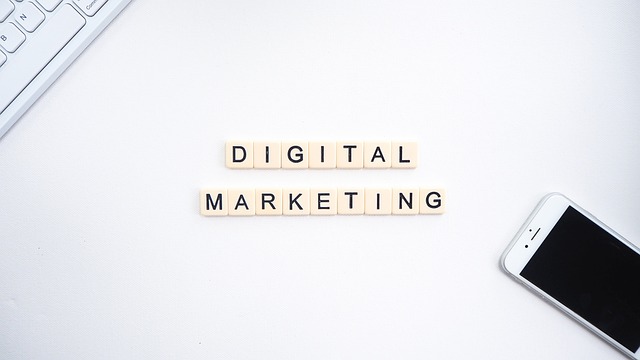Is content creation the best use for generative AI in marketing?

According to a new report from the CMO Council, CMO Intentions 2024, senior executives and boards of directors are looking for more operational efficiency and reduced costs in 2024, but that’s not all they want. The top four expectations of marketing include:
- Top-line revenue growth (54%)
- Operational efficiency and reduced cost (51%)
- AI-driven efficiencies (41%)
- Brand and customer value creation (38%)
The result will be hyper-personalized engagement that leads to loyal, high-value customers. What technology do they believe will help them achieve these? That’s right, generative AI.
Revenue growth is a top priority
It’s no secret that marketing should have a seat at the executive table. But to do so, it needs to show how it impacts revenue growth. Some marketers (65%, according to this study) believe marketing should own and optimize the company’s revenue generation engine.
It makes sense. Marketing is the first line to attracting and winning new customers. It plays a key role in supporting sales activities and customer success through lead and demand generation, account-based marketing, content development, and other marketing activities. But if this is true and necessary, why are marketing budgets continually slashed (Gartner reports that marketing budgets are down to 7.7% of overall company revenue) and resources laid off?
It’s hard to create a well-tuned marketing engine when you can’t afford the marketing technology you need to deliver these hyper-personalized experiences or when the customer data needed is distributed across siloed teams and systems.
In the CMO Council study, 62% of marketers said their lead generation and engagement strategies underperform, and 70% said they don’t feel confident in their sales and marketing model. Some of these challenges are related to technology, but not all. The relationship between teams is critical to get right, and if marketing wants to lead, it needs to build that relationship.
Is it generative AI to the rescue?
It’s impossible to talk about marketing today and not talk about AI. No one would let you. AI – in particular, generative AI – is here to rescue the marketing team. Fifty-seven percent of marketers in this study say that generative AI tools, applications, and analytics offer the most value and ROI in 2024. That’s followed by customer data platform and insights (49%), productivity, process, and workflow (32%), and customer journey analytics (27%).
Here’s the interesting part, however. These marketers think most of the value they will get from generative AI will come from content creation and optimization, followed by productivity and efficiency. Personalization comes in third, followed by predictive analytics. The report states:
With content, CMOs expect gen AI will help brands be both adept and adaptive in connecting and engaging more individually across cultures, borders, boundaries, shopper-graphics, psychographics and the requirements of localized marketing partners and channels.
Gen AI can also minimize human mistakes, inaccuracies, flubs, gaffes, snafus and errors in marketing communication images, video and text.
There is value in leveraging generative AI for content, and most companies are cutting their teeth on this technology by using it for content creation. But are there better uses that will help marketers in more important ways?
I look at the tools sales teams are getting that include generative AI. Tools like Salesloft, Outreach, and 6sense provide sales teams with deep insights into customers through tools that analyze account data and provide summaries and insights on meetings. Yes, it also helps create content, but for me, it’s the ability to find those insights so much faster through prompts that’s most important.
Marketers also need these capabilities in their own tools, and I haven’t seen them yet (tell me if I am wrong). Instead of relying on pre-built reports, why can’t marketers ask questions and have AI do the hard work of analyzing and pulling everything together? And then enable the marketer to select which insights to act on and help create the framework of a campaign to make that happen. Sure, there’s content creation in there, but it’s only part of what happens, and it’s not the first thing.
For example, check out what Aaron Levie, CEO of Box, told Phil Wainewright recently about how he sees generative AI helping companies like his:
We are one of the largest repositories in the world of unstructured data and content, and AI now is the first breakthrough technology, Gen AI specifically, that can literally look read, listen, watch, all of that information, understand and process it, let you ask questions of it. So to us it’s just this incredible gift of technology that we can now deliver so much more value for our customers. Compare that to, literally name any other software company, and I think you’d be hard pressed to find another company as significantly benefited by this technology as Box.
Think about what Tribble is doing with generative AI: creating RFP responses through a chat interface within the tools sales teams use every day. Why must marketers move between multiple tools to find information, analyze campaigns, define segments, write new content, and build marketing campaigns?
Contentstack is right that functionality needs to be pulled together in a single interface to create personalized experiences. We need to apply that vision to marketing more broadly and do it in a way that allows marketers to work with chat interfaces.
My take
I started this piece by talking about how marketers are expected to drive more revenue growth and operational efficiency and how many see AI as the answer to what they need to do. But marketing is focused on AI for the wrong thing. If the main benefit marketing gets from generative AI is content development, they are missing a huge opportunity. But it’s not necessarily their fault.
Martech vendors implementing generative AI are promoting it for content creation. When they start putting it to better use in their tools, maybe marketers will understand the value they can really get from it. So, we’re waiting, martech vendors.



